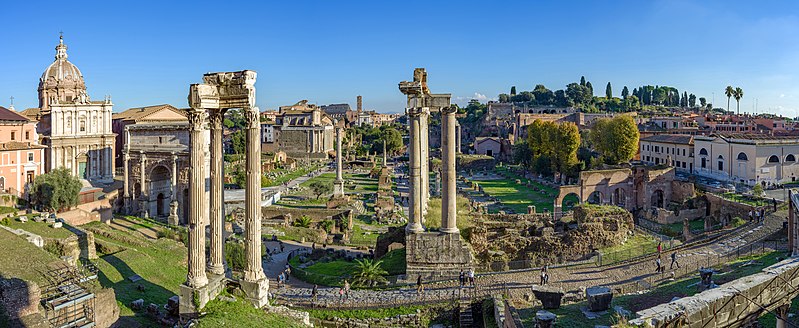Roman Forum

The Roman Forum, also known as the Forum Romanum in Latin, is one of the most significant and iconic archaeological sites in Rome, Italy. It was the heart of ancient Rome, serving as the center of Roman public life, politics, commerce, and culture for centuries. Here are some key facts about the Roman Forum:
Historical Significance: The Roman Forum dates back to the 7th century BC and was initially a marketplace and a meeting place for the people of Rome. Over the centuries, it evolved to become the political, religious, and cultural center of the Roman Republic and later the Roman Empire.
Architectural Layout: The Roman Forum was a sprawling complex of public squares, temples, basilicas, and other important buildings. It was surrounded by hills, including the Capitoline Hill, the Palatine Hill, and the Esquiline Hill.
Basilicas: Several basilicas were located within the Forum, including the Basilica Aemilia, Basilica Julia, and the Basilica of Maxentius. These structures served as meeting places and law courts.
Temples: The Forum housed several temples dedicated to Roman gods and goddesses, including the Temple of Saturn, the Temple of Vesta, the Temple of Castor and Pollux, and the Temple of Caesar.
Arch of Septimius Severus: The arch, built in AD 203 to commemorate the victories of Emperor Septimius Severus and his sons, stands at the northwest end of the Forum.
Curia Julia: The Curia Julia was the Senate House where the Roman Senate convened. It has undergone several renovations over the centuries.
Arch of Titus: This arch was built in AD 81 to honor the Flavian Emperor Titus for his victory in Jerusalem. It is famous for its depictions of the spoils from the Jewish Temple in Jerusalem.
The Rostra: The Rostra was a raised platform in the Forum where orators and politicians addressed the people. The term “rostrum” in English, referring to a speaker’s platform, is derived from this feature.
Vestal Virgins: The Temple of Vesta housed the Vestal Virgins, who were priestesses responsible for maintaining the sacred fire of Rome. They played a significant religious role in ancient Roman society.
Decline and Preservation: The Roman Forum fell into disrepair after the fall of the Western Roman Empire, and many of its structures were scavenged for building materials. In the Middle Ages, it was used as a grazing ground and was buried under layers of debris. It was not until the Renaissance that excavation and preservation efforts began.
Archaeological Site: Today, the Roman Forum is an open-air archaeological museum, and visitors can explore the well-preserved ruins and marvel at the historical and architectural significance of this ancient site.
Palatine Hill and Colosseum: The Roman Forum is directly connected to the Palatine Hill and the Colosseum, and it’s common for visitors to explore all three sites in a single visit.
The Roman Forum is a must-visit destination for those interested in Roman history and architecture. It serves as a powerful reminder of the grandeur of ancient Rome and its central role in shaping Western civilization.
Source : openai.com
Visiting hours & Tickets : https://shorturl.at/mtJU6
https://www.youtube.com/watch?v=cahs9LUqI2U
https://www.youtube.com/watch?v=f1uGrMX52mQ


Rate this article